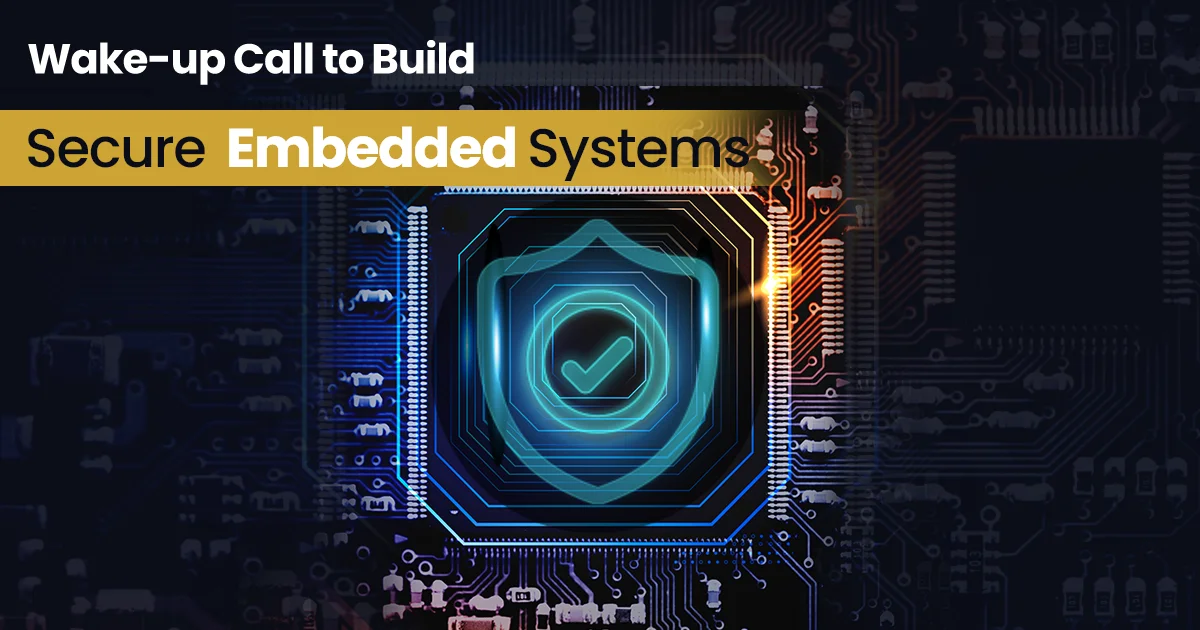When you are designing a PCB (Printed Circuit Board) the confusion of analog vs digital circuits becomes so obvious. PCB is a crucial component for each electronic system, especially in manufacturing and other industrial domains.
The debate is rooted in its foundational rules. How you process, transmit, and manipulate information determines the characteristics of analog and digital circuits. So if you are to choose between digital and analog circuits for an embedded system design process, the decision depends on conversion of data into signals.
Analog circuits are the perfect choice if you want to process audio data or perform an image filtering task. However, for digitized tasks where signals are in binary digits like 1s and 0s, digital circuits come in handy. Choosing a suitable circuit is crucial for businesses dealing with electronics and want to stay competitive.
With the global electronics market all set to reach a growth of $12.30bn by 2029 at a CAGR of 8.92% (2024-2029), it has been more crucial to know which one holds the supremacy to lead the future evolution in difference between analog and digital circuits.
This article focuses on the debate of digital vs analog circuits, exploring their strengths, weaknesses, and the scenarios where one outshines the other.
Analog vs Digital Circuits: Overview of Both the Systems
Knowing what these digital and analog circuits mean in terms of hardware design and development is crucial before you compare them So, let’s first know these terms before comparing analog vs digital circuits.
What Is Analog Circuit?
Analog circuits deal with continuously varying signals where the signals change gradually with respect to time. These signals may include various physical quantities like temperature, sound, light, pressure, etc. Thanks to the flexibility of continuously variable signals, these circuits are ideal for applications requiring high precision and control.
Such circuits are used in many different industries including aviation, manufacturing and more. Resistors, capacitors, inductors, transistors, and operational amplifiers are among the most recognizable components in analog circuits.
What Are Digital Circuits?
Digital circuits operate on discrete signals, most signified by binary values of 0s and 1s. They are one of the main building blocks of today’s computers, digital communications, and various types of electronics.
Digital circuits employ elements, including logic gates, flip-flops, multiplexers, and many that are needed to achieve the modern-day digital computation workforce. These signals are more reliable and consistent than analog ones because their distinct values are less affected by noise and signal degradation.
It makes the entire debate of digital vs analog in electronics interesting with one focusing on continuous signals and other on discrete signals. But if you are to compare analog vs digital circuits knowing the primary difference is important.
Analog vs Digital Circuits: How They Are Different?
The difference between analog and digital circuits is fundamental in electronics, with each having its own advantages. Knowing the differences of analog vs digital circuits is crucial if you are choosing tech stack for certain operations and devising efficient electronic systems.
| Factors | Analog Circuits | Digital Circuits |
|---|---|---|
| Signal Representation | Information is represented using continuous signals | Information is passed in different binary signals. |
| Precision and Fidelity | Help to provide high precision in signal representation, which makes them ideal for audio and radio frequency (RF) applications. | Robust and consistent in terms of signal representation, making them an ideal fit for data processing and storage purposes. |
| Noise and Interference | More prone to noise and signal latency over distance | Offer higher Db of noise cancellation and are fit for reliable performance in varied environments. |
| Design Complexity | More meticulous in design and particularly in component selection, making it complex to design from scratch. | Simpler with standardized components and logic gates. |
| Integration and Scalability | Challenging to scale to maintain signal integrity across larger systems | Offer ease as they function on binary systems. |
Key Components and Concepts In Analog Circuit Designs
Analog circuit designing is an important if you are comparing analog vs. digital circuits. These circuits operate with continuous signals and employs different kinds of building blocks for efficient operations. This makes it important to understand its key components and concepts to design it.
Key Components in Analog Circuits
Key Concepts in Analog Circuit Design
Key Components and Concepts In Digital Circuit Designs
Digital circuit design is instrumental in current electronics and forms the basis of constructing intricate yet efficient designs. Here are the key components and concepts that form the foundation of digital circuit designs:
Key Components in Digital Circuits
Key Concepts in Digital Circuit Design
Advantages of Analogue Circuits
Analog circuits exhibit several special characteristics that make them essential in different applications. As a result, engineers use them for applications that need the accurate representation of continuous signals in a smooth and precise manner.
Advantages of Digital Circuits
Due to the binary system support from the ground up, analog circuits offer many advantages for modern digital circuit-based applications in terms of reliability, scalability, and functionality. Some of the popular advantages of digital circuits include:
Applications Of Analog Circuits And Digital Circuits
Engineers widely use both analog and digital circuits in electronics due to their respective strengths and weaknesses. By knowing their specific usage it becomes easier to appreciate their roles towards the advancement of technology.
Applications of Analog Circuits
Applications of Digital Circuits
PCB Design Guidelines for Analogue Circuits
Designing Printed Circuit Boards (PCBs) for the analog circuits calls for extra precautions and careful planning to reduce noise on circuits. Here are key analog PCB design guidelines to follow:
1. The circuit should be tested on the temperature range, as well as increased temperature can damage the material. This is the case because most analogue circuits are susceptible to high temperatures due to usage in industrial or automotive environments.
2. The circuit should provide low noise operation, low jitter and low drop-out. This is because noise, any interference that is introduced into the circuit, will be amplified and cause distortion of the signal passing through the circuit.
3. The circuit should not consume more power while it is in operation or in standby mode. This is especially so if the core signal path includes analogue circuits, as in portable electronic devices whose power supply is nearly always a limiting factor.
4. Last but not least, the circuit should be made such that it has very high reliability. This is why analogue circuits are found in applications that cannot afford to fail, like in the medical devices.
PCB Design Guidelines for Digital Circuits
When opting for PCB design services for digital circuits, there is a need to pay special attention to signal integrity, reduction of electromagnetic interference (EMI) and circuit performance. Since digital circuits use digital signals that are less affected by noise than analogue signals, high-speed digital circuits need a proper design for the integrity of data. Here are key considerations for digital PCB design:
1. In this regard, the circuit should incorporate low-power consumption as they are widely used in portable electronic devices, and for such, battery consumption is a determining factor.
2. It should also cater for the high-speed operation of the circuit to make digital circuits ideal for the real-time communication system.
3. The circuit should be robust, that is it should be very reliable, especially when being used for applications like control systems that cannot afford to fail.
Conclusion
Engineers often use analog circuits in audio power amplifiers, radio frequency transmission, and sensor interfacing because these circuits excel at precise signal reproduction and real-time processing. On the other hand, digital circuits offer more reliability, scalability, and adaptability, which are the main parts of the current computation, storage, and communication process.
Studying both analog and digital circuits makes it easier for engineers to determine which approach offers the greatest benefits for their objectives.
When planning to work on the PCB desgining, it is crucial to follow PCB Design Guidelines for Digital Circuits. And we can be that. So, do you have an embedded project for us? Let us know your idea, and let’s discuss the possibilities we can create with it.
FAQs: Analog vs Digital Circuits
The main difference is in signal processing: analog circuits deal with analog signals which are continuously varying smoothly while the digital circuits deal with discrete signals which are in the form of 0’s and 1’s only.
Analog PCB design concentrates on minimizing noise and signal distortions for continuous signals by putting specific component position and tracks. The digital PCB design, on the other hand, pays special attention to the tiny signals and timing or clocks of the discrete signals, of high-speed data signals mainly.
Analog design is normally rated as being more challenging as a result of constraints that include choice of the individual components, effects of noise as well as signal characteristics. Digital design is also complex but it has standard parts and is highly modular.
That really depends on the type of project you choose. Analogue design is very important for applications where details and fine signals are important like audio and RF circuits. Digital design is substantive in computing, data processing and interconnection because it provides for scalability and stability.

Article By
Paresh Sagar is the CEO of Excellent Webworld. He firmly believes in using technology to solve challenges. His dedication and attention to detail make him an expert in helping startups in different industries digitalize their businesses globally.





